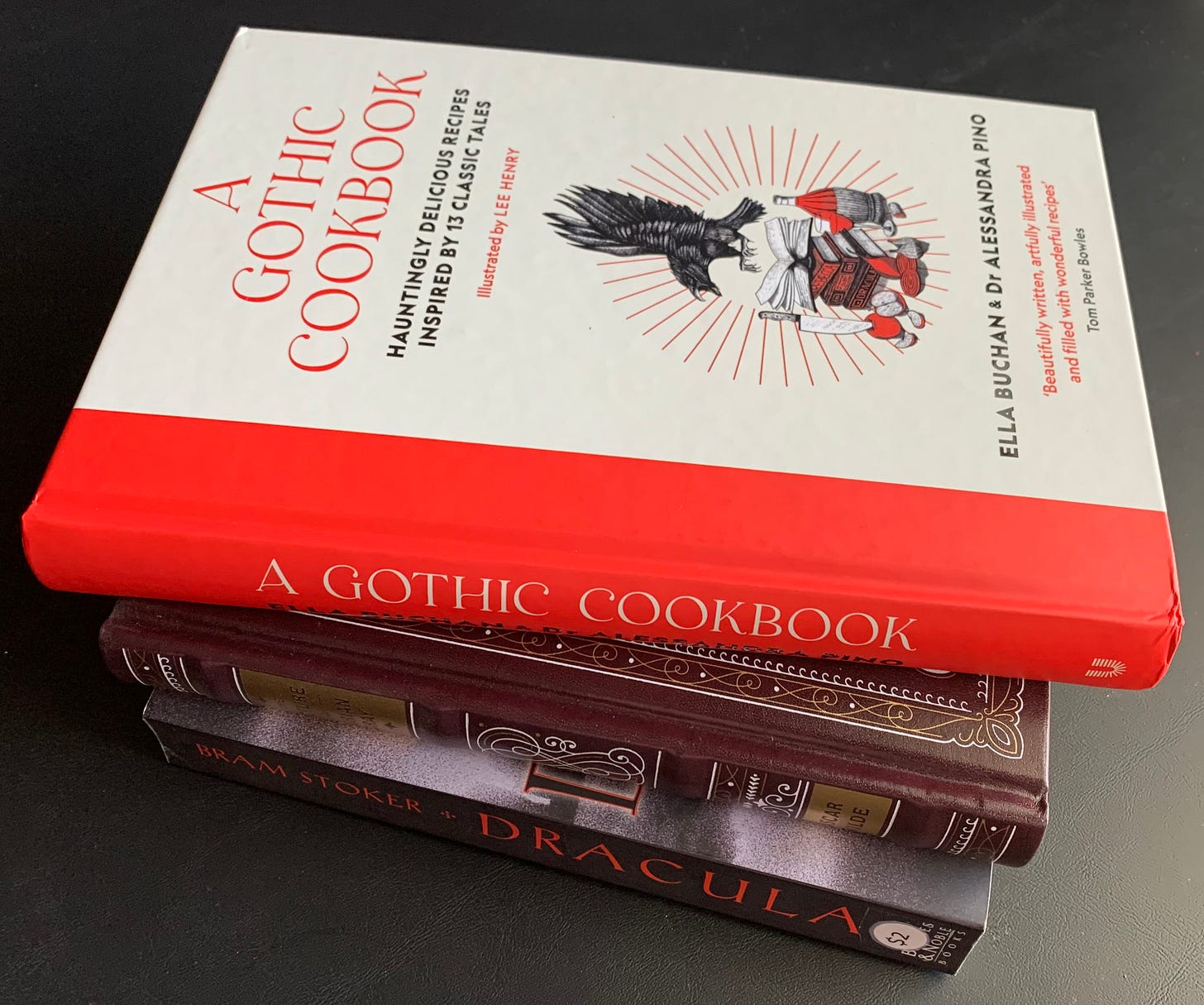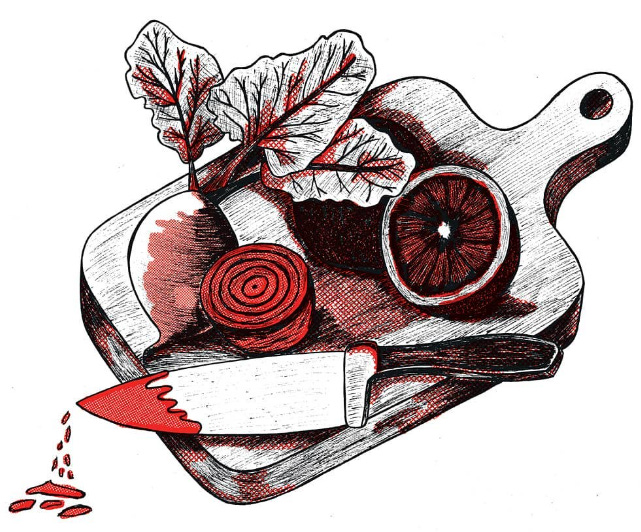What seems like ages ago I supported a crowdfunding campaign for a book I wanted to will into existence: A Gothic Cookbook: Hauntingly Delicious Recipes Inspired by 13 Classic Tales. “Is food the most underrated character in Gothic literature?” began the pitch by food writer Ella Buchan and self-professed “gothic food geek” Dr. Alessandra Pino. I personally didn’t think twice before signing on to back “an illustrated cookbook inspired by classic and contemporary Gothic texts.”

Flash-forward two years and four months later when my copy finally arrived in the mail, and I was thrilled to finally be holding it in my hands! I’m sure part of the excitement was sheer suspense. But I was also bewitched by the gorgeous typography and stunning illustrations by Henry Lee (aka Ounce of Style)—not to mention the added satisfaction of seeing my name listed on page 204.
With major food holidays such as Thanksgiving, Christmas, and others coming up (What will you be whipping up this Krampusnacht?), the timing of the book’s arrival was perfect for the upcoming celebratory season. While I don’t profess to be adept in the kitchen, the charm of this cookbook goes above and beyond the the recipes.
It’s palpable how much of themselves the authors poured into this collection. As someone who has worked in publishing, the amount of work that goes into writing any book is enormous. Add the creation of original recipes to the mix and you’re getting near literal blood, sweat, and tears.

The 13 tales selected as inspiration for A Gothic Cookbook range from classic to contemporary: from Mary Shelley’s Frankenstein written in 1818 to the 1991 vampire novel by Jewelle Gomez, The Gilda Stories. My all-time favorite novel The Picture of Dorian Gray by Oscar Wilde is included, as is as Daphne du Maurier’s Rebecca, which was the basis for Alfred Hitchcock’s 1940 film of the same name.
I especially appreciated both the range and diversity of voices represented—7 of 13 selections are written by female authors, of which 2 are women of color. There’s also an afterward with a very tempting list of “what to read next.” (Weep for my TBR pile…)
But most of all, I enjoyed the insightful literary analysis. Of Shirley Jackson’s The Haunting of Hill House, the narrative reads, “Jackson employs food as a classic Gothic device, using it to hint that something else is going on beneath the surface … .” I have no doubt the Gothic Cookbook will have you re-reading your favorites and exploring new tales with an altogether different lens.






